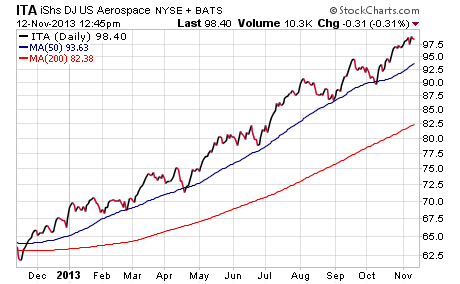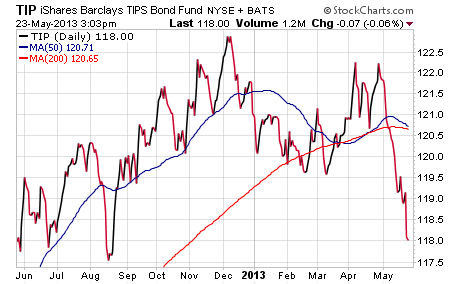How To Add Alpha Using Tactical ETFs FMD Capital Management
Post on: 2 Июнь, 2015 No Comment

Written by David Fabian, November 08th, 2013
Constructing a well balanced portfolio takes time, tools, and discipline in order to implement a plan that will meet your goals. My preferred investment vehicle to construct a diversified portfolio is through exchange-traded funds. I love ETFs because they are low cost, transparent, liquid, and easy to trade. In addition, they allow you the ability to set automatic stop losses as a function of managing risk and have greater flexibility than a traditional mutual fund.
As I wrote several months ago. the first step in this process is selecting core holdings that will be the foundation from which you can ultimately expand upon. These core positions will give you broad-based exposure and directional bias in the market to keep pace with rising stock prices. However, a core position will only take you so far. Ultimately getting exposure to specific sectors or tactical trading ideas will shape your portfolio to your specific investment preference.
Tactical positions represent a sector, industry group, or special situation that you want to take advantage of. Often times these positions start out as short-term trades that can turn into long-term investment themes. They give you a measure of overweight exposure towards a certain area of the market that you feel is offering excellent potential for capital appreciation.
I typically recommend that you allocate anywhere between 20-30% of your portfolio towards tactical ETF opportunities and keep a measure of cash on hand for new themes that may present themselves. That way you can actively shift your holdings to take advantage of new trends or capitalize on an innovative strategy when the timing is right. In addition, I always recommend pairing new trades with a sell discipline to guard against the potential of a reversal.
Now let’s take a look at some of the different types of tactical ETF opportunities:
Sectors
One of the easiest ways to add instant tactical exposure to your portfolio is to select a sector fund. By owning an ETF that only invests in technology or healthcare stocks you can get pinpoint exposure to a group of companies that are in a similar economic segment. I recently profiled how Fidelity launched 10 sector ETFs which are the cheapest in the industry when compared to larger and more well-established competitors.
The largest and most well-known sector funds are the SPDR ETFs which are sponsored by State Street (STT). These widely tracked ETFs are often referenced by experts as a benchmark for their respective categories. However, that doesn’t necessarily make them the best option for your portfolio. A comparison between the Consumer Staples Select Sector SPDR (XLP) and the First Trust Consumer Staples AlphaDEX Fund (FXG) shows that FXG has outperformed its peer by over 18% in the last year.
Remember that when selecting an ETF, you should compare the underlying index construction, holdings, and fees to determine what might be best suited for your needs. In this example, FXG benefits from a unique index construction methodology with an outsized bias towards mid-cap stocks which has been an excellent alpha creator over the benchmark.
Industry Groups
Slicing the markets down even further leads us to industry groups, which give you even more concentrated exposure to a select group of similar companies. Some great examples include biotechnology or solar stocks which have both had fantastic moves in 2013. Two ways to play these industries include the iShares NASDAQ Biotechnology ETF (IBB) and the Guggenheim Solar ETF (TAN). These ETFs have gained approximately 44% and 147% year-to-date respectively as November 7.
It’s important to note that with more concentrated positions (fewer underlying companies); you are going to likely have more volatility than a traditional sector or broad-based core ETF. That is why I generally take smaller position sizes in industry specific ETFs. They can be fantastic performers in the right environment, which is why identifying a trend early and jumping on board can lead to excellent results.

Non-Correlated Asset Classes
Another advanced way to add tactical exposure to your portfolio is through the use of non-correlated asset classes such as currencies, commodities, or even inverse positions . These give you the benefit of diversification in securities that will likely move in a different direction than traditional stocks or bonds.
Currency related ETFs have been on a roller coaster ride so far this year, with the two most popular positions being the PowerShares US Dollar Bullish (UUP) and the CurrencyShares Euro Trust (FXE). These ETFs have whipsawed up and down throughout the majority of 2013 as traders have digested economic data, central bank policy, and political turmoil.
Often times these positions can be used to pair risk with another holding such as international equities, gold, oil, or a broad-based commodity fund such as the PowerShares DB Commodity Index Tracking Fund (DBC). Commodities have had their own problems this year, but have also seen periods of exceptional growth. That is why they should be included on your watch list and monitored for a potential entry point down the road.
It is worth mentioning that many currency and commodity related ETFs are traded on futures exchanges, and thus require the ETF to be structured as a partnership instead of a trust. This creates the additional burden of shareholders receiving a K-1 tax form at the end of the year which must be reported to the IRS. There are several alternative options that through exchange-traded notes that may lessen the tax burden for individual investors. Make sure to thoroughly research the structure and tax implications of any new fund before purchasing it.
The Bottom Line
There are hundreds of different ways that investors can use tactical ETF positions in their portfolio to enhance their returns, play defense, or take advantage of short-term opportunities. In addition, ETF providers are continuing to find innovative products and indexes that will revolutionize portfolio strategies in the years to come. The key is being able to structure your holdings to achieve your goals while keeping an eye on managing risk.














